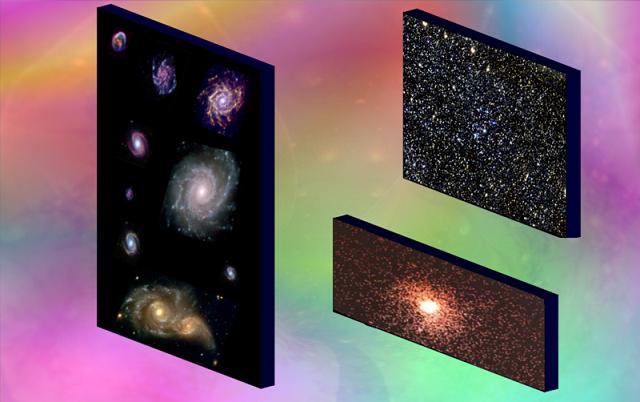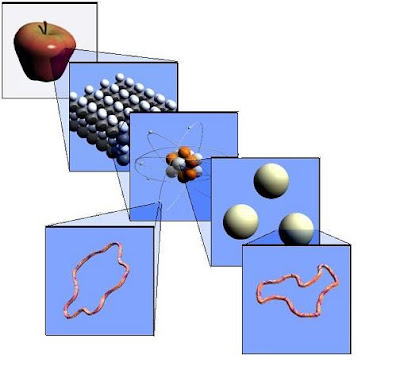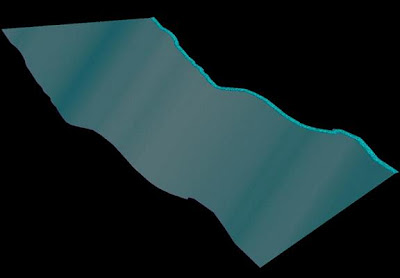String theory simplified and poeticised.
Schläft ein Lied in allen Dingen
Die da träumen fort und fort,
Und die Welt hebt an zu singen,
Triffst du nur das Zauberwort.
(Joseph Freiherr von Eichendorff)
Magic wand
Sleeps a song inside all things
Dreaming in the spellbound world,
That will waken up to sing,
If you sound the magic word.
(Proverbs. Sentence poem by Joseph Freiherr von Eichendorff)
Please don't copy without permission. Copyright © 2010 Brainstorming Ideas.)
String theory — science or philosophy?
This theory especially appeals to me because it’s based on a very musical idea — strings, and ‘music’, as Nietzsche put it, ‘is the true Idea of the World’ or in other words ‘world is materialised music’ (Schopenhauer).
This is what string theory is all about: the electrons, quarks and other particles are 1-dimensional oscillating "strings", possessing only the dimension of length. Their vibration determines the particles' flavour (quantum number of an elementary particle, which describes values of conserved quantities in the dynamics of the quantum system), charge, mass and spin. In addition, the superstring theory claims that a "supersymmetry" exists between bosons and fermions — force carriers and matter. But probably its most mind-boggling peculiarity is that such theory requires the existence of several extra unobservable dimensions — M-theory, for instance, puts forward eleven-dimensional space-time.
Apple in the light of string theory.
Thus particles — electrons, photons, gravitons and so forth — are actually different vibrational states of the same underlying string. The mass of the particle can be deduced from the vibrations which the string exhibits; roughly speaking, the mass depends upon the "note" which the string sounds.
By the same token every single object in the world is a counterpoint melody of a bunch of dancing strings.
In the beginning, ever-competing boffins developed five major string theories, each with a different mathematical structure describing different physical scenarios. Then, at last, it dawned on them (it took me only five minutes to figure it out, while they pondered for years to come to the same conclusion ;-)) that the theories in question might be describing the same phenomenon from different perspectives and unified them into M-theory, asserting that strings are really 1-dimensional slices of a 2-dimensional membrane vibrating in 11-dimensional space.
"A metaphysical issue that crops up in multiverse schema that posit infinite identical copies of any given universe is that of the notion that there can be identical objects in different possible worlds."
But what's the point of self-same worlds? That would be boring. According to the counterpart theory of David Lewis, "the objects should be regarded as similar rather than identical".
That makes much more sense.
By the same token every single object in the world is a counterpoint melody of a bunch of dancing strings.
In the beginning, ever-competing boffins developed five major string theories, each with a different mathematical structure describing different physical scenarios. Then, at last, it dawned on them (it took me only five minutes to figure it out, while they pondered for years to come to the same conclusion ;-)) that the theories in question might be describing the same phenomenon from different perspectives and unified them into M-theory, asserting that strings are really 1-dimensional slices of a 2-dimensional membrane vibrating in 11-dimensional space.
"A metaphysical issue that crops up in multiverse schema that posit infinite identical copies of any given universe is that of the notion that there can be identical objects in different possible worlds."
But what's the point of self-same worlds? That would be boring. According to the counterpart theory of David Lewis, "the objects should be regarded as similar rather than identical".
That makes much more sense.
String theory is widely considered to be the first candidate for the theory of everything (TOE) that would describe the known fundamental forces (gravitational, electromagnetic, weak and strong interactions) and matter (quarks and leptons) in a mathematically complete system. However, it doesn’t provide any quantitative experimental predictions. It seems that, like any other quantum theory of gravity, testing the theory directly would require prohibitively expensive or technically impossible feats of engineering (and thanks God for that). Whether the theory can be tested indirectly is anybody’s guess.
String oscillations, in the absence of external interactions, are governed by tension and kinetic energy and take on the whole spectrum of discrete vibrational modes. Each oscillation mode produces a different type of particle, with the string’s dance determining its mass, spin and charge. When the strings start to waltz with each other, splitting and recombining, it translates into particle emission and absorption.
Just like a guitar string that produces different musical notes depending on how you pluck them, each note corresponds to a particle.
‘Music is the subtlest form of the movement of matter.’ Paganini
In fact, cosmological strings could be any dimension and vibrate in any direction, with particles travelling through our or any other dimension.
In most string theories graviton (quantum of gravity) is a closed string mode, and photon is an open string mode, but two ends of an open string can meet and thus form a closed string. Along the same lines, I’d hazard a suggestion that closed strings can open and form open strings. Some theories that include fermionic vibrations are called superstring theories, but they’re probably just different limits of M-theory.
M-theory offers a new insight into the structure of the world: the visible, four-dimensional universe is contained in a brane inside a higher-dimensional space, although additional dimensions can be compacted within the visible universe.
 |
| Branes (M-theory). |
Another attractive feature is the concept of D-branes — membranes of different dimensionality (from a zero dimensional membrane — a point — and upwards to 2-dimensional membranes, 3-dimensional volumes, etc).
D-branes kind of define worldsheet (two-dimensional manifold that describes the embedding of the string in spacetime, similar to the worldline of a particle in special and general relativity) boundaries, they can emit and absorb closed strings; therefore they have mass (since they emit gravitons) and — in superstring theories — charge as well (since they emit closed strings which are gauge bosons).
Plus, the ends of open strings are attached to them, and the collision of D-branes may result in the creation of another universe, just like ours.
I’ve already mentioned it as an alternative to the Big Bang theory.
Still the same old question rears its ugly head: who created all these dimensions, branes, universes and strings and, once again, what was before them? What’s in between the branes? Dark energy and/or dark matter? The never-ending story.
Worldsheet — the path of the string in space-time.
In a way this theory suggests the intrinsic musicality of the physical world, universes and the like. Keep in mind that this only regards the impartial and indifferent universe, the world of humans and other living creatures is a different story.


No comments:
Post a Comment
Speak out.